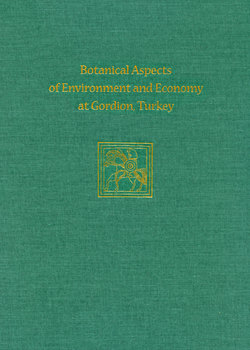Читать книгу Botanical Aspects of Environment and Economy at Gordion, Turkey - Naomi F. Miller - Страница 9
На сайте Литреса книга снята с продажи.
ОглавлениеPreface
I first visited Gordion as a tourist in 1983, little expecting I would return five years later to participate in the renewed excavations led by Mary Voigt under the auspices of the University of Pennsylvania Museum. The Penn Museum–sponsored excavations had been suspended after the 1974 death of Professor Rodney S. Young, but scholars returned every summer for study seasons. In the summer of 1987, a small team led by Robert H. Dyson, Jr., Director of the University of Pennsylvania Museum, went to Gordion to assess its potential for a renewed, focused archaeological investigation. Dyson, Voigt, and William Sumner realized that modern excavation methods and analyses of a deep sounding adjacent to or within the older excavated area of the Citadel Mound could provide chronological control and archaeobiological evidence that was not available at the time of the original work.
My field research at Gordion has been supported by the project through grants awarded to Mary Voigt from the National Endowment for the Humanities and the National Geographic Society. In addition, I received travel grants for field work from the American Philosophical Society, Yener Yilmaz, and the University of Pennsylvania Museum. The University Research Foundation (University of Pennsylvania) funded a trip to London and Edinburgh for herbarium work; to this day I do not know if that award was granted in the category of social sciences, natural sciences, or humanities, but I am grateful that Keith DeVries was willing to be my faculty collaborator in that enterprise. Keith also inspired several expeditions to investigate the Gordion landscape. I am grateful to Bob Dyson and the University of Pennsylvania Museum for supporting this and other archaeobotanical research by employing me for more than 20 years.
This volume is a study of the archaeobotanical remains recovered from the excavations of 1988 and 1989, but much of the botanical and ethnobotanical work that informs the discussion was carried out in subsequent years. I would particularly like to acknowledge with fond memories Remzi Yilmaz, Ekrem Bekler, and Muamer Bektöre, who provided practical help with many aspects of the field work, helped me understand Turkish and Turkish culture, and answered my questions about local agricultural practices. I also thank other team members for their help and insights, especially John “Mac” Marston, Ayşe Gürsan-Salzmann, Richard Liebhart, Melinda Zeder, and Bob Henrickson, along with Hüseyin Firincioglu (retired from the Field Crop Research Institute) and Mecit Vural (Gazi University). I am grateful to botanists at the herbaria of the Royal Botanical Gardens of Edinburgh and Kew, who helped me identify most of the voucher specimens I collected between 1988 and 1992. I also appreciated free access to the herbarium established and organized by Gordon Hillman and Mark Nesbitt that is housed at the British Institute in Ankara.
Over the years I have conferred with several colleagues about archaeological seed and plant part identifications; I particularly would like to credit Gordon Hillman for identifying the flax seeds from the Destruction Level. Although I personally sorted and identified most of the samples reported here, over the years I have supervised several laboratory assistants who sorted some of them: Wies van den Brink, Christine Hide, Shannon Palus, Bridget Crowell, and Nancy Mahoney.
David French loaned the British Institute in Ankara flotation set-up to the project in 1988 and 1989, and Mark Nesbitt not only patiently explained how to run it, but provided detailed instructions on how to have our own built. Our government representatives, sent to us from the Museum of Anatolian Civilizations or the General Directorate of Museums and Monuments, have been very supportive of the archaeobotanical research, especially Nurhan Ülgen, Halil Demirdelen, and Vahap Kaya. The Meteoroloji Bakanligi and the Polatli Meteoroloji İstasyonu kindly provided the weather data.
My thinking has benefited tremendously from conversations with more colleagues than I can name, but I have learned the most from Mary Voigt, Ben Marsh, Ayşe Gürsan-Salzmann, and Keith DeVries. My former supervisor, Stuart Fleming, always supported my work and that of others on the Gordion project, assigning assistants, reading manuscripts, and acting as a sounding board for issues surrounding the project. Lindsay Shafer worked on digitizing my original pencil drawings of the seeds, and Shannon Palus and Nina Johnson prepared the seed photographs. The two reviewers, Mark Nesbitt and Alexia Smith, gave copious constructive comments, which I have done my best to address.
Finally, I would like to thank Project Director G. Kenneth Sams, Excavation Director Mary M. Voigt, and the entire team, foreign and local, for their enthusiastic, if sometimes bemused, cooperation in setting up and running the flotation machine; taking charcoal and soil samples; and for humoring me as I try to explain the difference between wheat and barley, or teach them to identify üzerlik (also known as wild rue or Peganum harmala) that, for your information, is the most obvious plant that grows all around the dig house!
